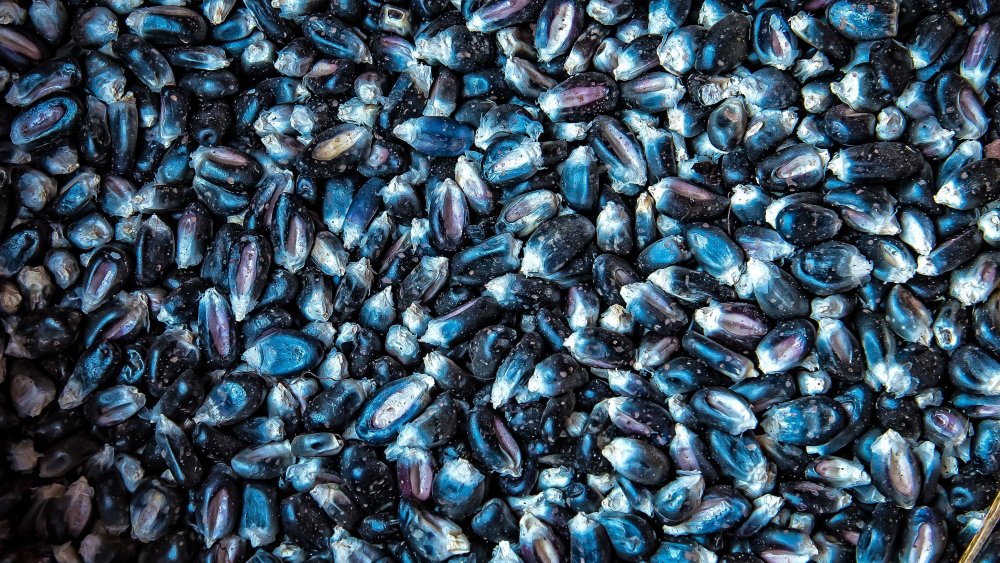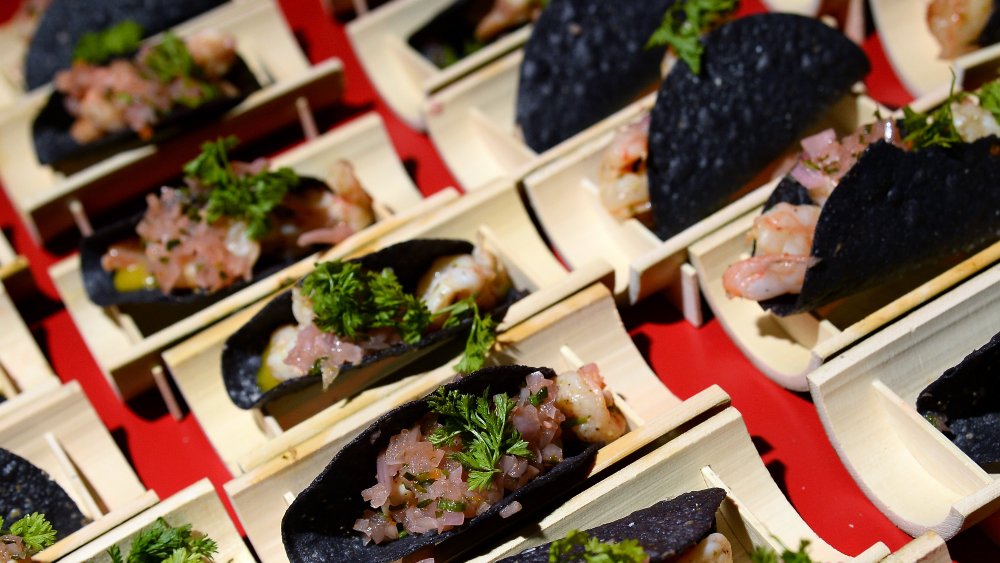Why You Should Start Eating Blue Corn
Corn on the cob, cornbread, and corn-based chips like Fritos are comfort foods, but most of these use the familiar white and yellow corn varieties. If you're looking to try out something a bit more unusual, consider giving blue corn a try.
Blue corn was initially developed by the Hopi Native American tribe, which originates in the southwestern region of the United States (via Purdue). It played an important role in the tribe's rituals, which allowed the varietal to survive through the generations.
Contrary to what the name implies, blue corn can actually be a few different shades, from a light grey to an almost black-purple color (via The San Diego Union-Tribune). The Hopi had different names for the corn depending on whether it was standard blue (Sakwaqa'o), hard blue (Huruskwapu), or gray-blue (Maasiqa'o). In the past decade, this corn type has become increasingly common in tortillas, chips and corn muffins and cakes. In Mexico, for example, new products using blue corn saw a 133 percent increase from 2005 to 2009 (via Food Navigator).
The health benefits of blue corn
On the health front, blue corn contains large amounts of natural antioxidants that can help protect against heart disease, diabetes, and cancer (via Medical Xpress). Blue corn also has a fair share of anthocyanins, which doctors say might be helpful in reducing inflammation and promoting weight loss (via Women's Health).
A typical rule of thumb is that more vibrant and colorful fruits and vegetables have a higher nutritional value, and this theory holds true for blue corn when compared to white or yellow corn. Products made with blue corn reap the health benefits as well. Research has shown that products made with blue corn, such as blue corn tortillas, contain 20 percent more protein than similar products made with white corn (via WebMD). Blue corn products tend to have less starch as well as a lower glycemic index, which is helpful for people with diabetes or who are trying to lose weight.

